
Muhammad was an Arab religious, social, and political leader and the founder of Islam. According to Islamic doctrine, he was a prophet divinely inspired to preach and confirm the monotheistic teachings of Adam, Abraham, Moses, Jesus, and other prophets. He is believed to be the Seal of the Prophets within Islam. Muhammad united Arabia into a single Muslim polity, with the Quran as well as his teachings and practices forming the basis of Islamic religious belief.
The Battle of Badr, also referred to as The Day of the Criterion in the Qur'an and by Muslims, was fought on 13 March 624 CE, near the present-day city of Badr, Al Madinah Province in Saudi Arabia. Muhammad, commanding an army of his Sahaba, defeated an army of the Quraysh led by Amr ibn Hishām, better known among Muslims as Abu Jahl. The battle marked the beginning of the six-year war between Muhammad and his tribe. Prior to the battle, the Muslims and the Meccans had fought several smaller skirmishes in late 623 and early 624.
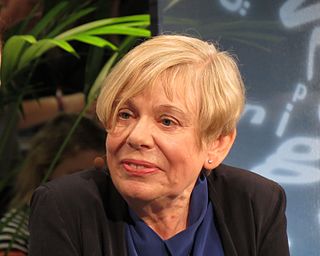
Karen Armstrong is a British author and commentator of Irish Catholic descent known for her books on comparative religion. A former Roman Catholic religious sister, she went from a conservative to a more liberal and mystical Christian faith. She attended St Anne's College, Oxford, while in the convent and majored in English. She left the convent in 1969. Her work focuses on commonalities of the major religions, such as the importance of compassion and the Golden Rule.

The Treaty of Hudaybiyyah was an event that took place during the time of the Islamic prophet Muhammad. It was a pivotal treaty between Muhammad, representing the state of Medina, and the Qurayshi tribe of Mecca in January 628. It helped to decrease tension between the two cities, affirmed peace for a period of 10 years, and authorised Muhammad's followers to return the following year in a peaceful pilgrimage, later known as The First Pilgrimage.
Eleven women were confirmed to be married to Muhammad. Muslims use the term Umm al-Mu'minin prominently before or after referring to them as a sign of respect, a term derived from Quran 33:6.

The Battle of the Trench, also known as the Battle of Khandaq and the Battle of the Confederates, took place in the year 627; it was a 27-day-long defense by Muslims of Yathrib from Arab and Jewish tribes. The strength of the confederate armies is estimated at around 10,000 men with six hundred horses and some camels, while the Medinan defenders numbered 3,000.

The military career of Muhammad, the Islamic prophet, encompasses several expeditions and battles throughout the Hejaz region in the western Arabian Peninsula which took place in the final ten years of his life, from 622 to 632. His primary campaign was against his own tribe in Mecca, the Quraysh. Muhammad proclaimed prophethood around 610 and later migrated to Medina after being persecuted by the Quraysh in 622. After several battles against the Quraysh, Muhammad conquered Mecca in 629, ending his campaign against the tribe.

The Battle of Uhud was a major engagement between early Muslims and the Quraysh during the Muslim-Quraysh War. The battle was fought in a valley north of Mount Uhud near Medina on Saturday, 23 March 625 AD,
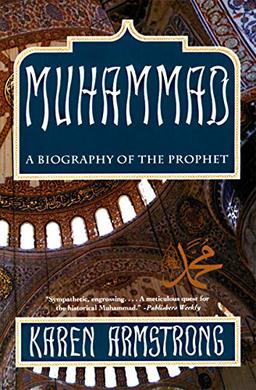
Muhammad: A Biography of the Prophet is a biography of Muhammad by the British religion writer and lecturer Karen Armstrong, published by Gollancz in 1991.

William Montgomery Watt was a Scottish Orientalist, historian, academic and Anglican priest. From 1964 to 1979, he was Professor of Arabic and Islamic studies at the University of Edinburgh.
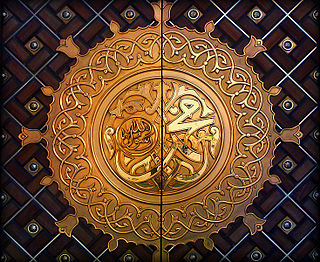
Muḥammad bin ʿAbd Allāh bin ʿAbd al-Muṭṭalib bin Hāshim is believed to be the seal of the messengers and prophets of God in all the main branches of Islam. Muslims believe that the Quran, the central religious text of Islam, was revealed to Muhammad by God, and that Muhammad was sent to restore Islam, which they believe did not originate with Muhammad but is the true unaltered original monotheistic faith of Adam, Abraham, Moses, Jesus, and other prophets. The religious, social, and political tenets that Muhammad established with the Quran became the foundation of Islam and the Muslim world.

The first pilgrimage or Umrah of Dhu'l-Qada was the first pilgrimage that the Islamic prophet Muhammad and the Muslims made after the Migration to Medina. It took place on the morning of the fourth day of Dhu al-Qi'dah 7 AH, after the Treaty of Hudaybiyyah 6 AH. The entire event was three days long.
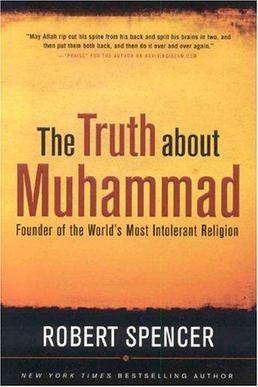
The Truth About Muhammad: Founder of the World's Most Intolerant Religion is a biography by American anti-Muslim author Robert B. Spencer about the Islamic prophet Muhammad. Written from a critical perspective towards its subject, this book examines the life of Muhammad in ten chapters based on the sources provided by his early biographers, together with the Quran and the hadith, while also challenging their historical authenticity.

Criticism of Muhammad has existed since the 7th century AD, when Muhammad was decried by his Non-Muslim Arab contemporaries for preaching monotheism, and by the Jewish tribes of Arabia for what they claimed were unwarranted appropriation of Biblical narratives and figures and vituperation of the Jewish faith. For these reasons, medieval Jewish writers commonly referred to him by the derogatory nickname ha-Meshuggah.

Fāṭima bint Muḥammad, commonly known as Fāṭima al-Zahrāʾ, was the daughter of the Islamic prophet Muhammad and his wife Khadija. Fatima's husband was Ali, the fourth of the Rashidun Caliphs and the first Shia Imam. Fatima's sons were Hasan and Husayn, the second and third Shia Imams, respectively.

The Kaaba, also spelled Ka'ba, Ka'bah or Kabah, sometimes referred to as al-Ka'ba al-Musharrafa, is a stone temple at the center of Islam's most important mosque and holiest site, the Masjid al-Haram in Mecca, Saudi Arabia. It is considered by Muslims to be the Bayt Allah and is the qibla for Muslims around the world. The current structure was built after the original building was damaged by fire during the siege of Mecca by Umayyads in 683.
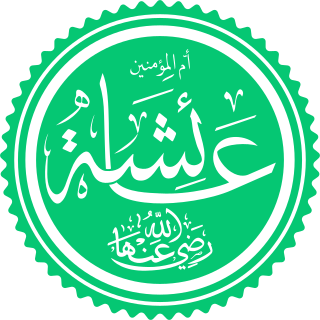
Aisha was Islamic prophet Muhammad's third and youngest wife. In Islamic writings, her name is thus often prefixed by the title "Mother of the Believers", referring to the description of Muhammad's wives in the Qur'an.
Abu Talib ibn Abd al-Muttalib was the leader of Banu Hashim, a clan of the Qurayshi tribe of Mecca in the Hejazi region of the Arabian Peninsula. He being the brother of Abdullah the father of the Islamic Prophet Muhammad, was his uncle and father of Ali. After the death of his father Abd al-Muttalib ibn Hashim ibn Abd Manaf, he inherited this position, and the offices of Siqaya and Rifada. He was well-respected in Mecca.
The Expedition of Bir Maona, according to Islamic tradition, took place four months after the Battle of Uhud in the year A.H. 4 of the Islamic calendar. It is believed the Islamic prophet Muhammad sent missionaries to preach Islam, at the request of Abu Bara. Forty or seventy of the Muslim missionaries sent by Muhammed were killed.
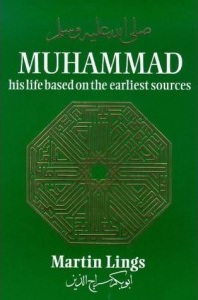
Muhammad: His Life Based on the Earliest Sources is a 1983 biography of the Islamic prophet Muhammad by Martin Lings.












